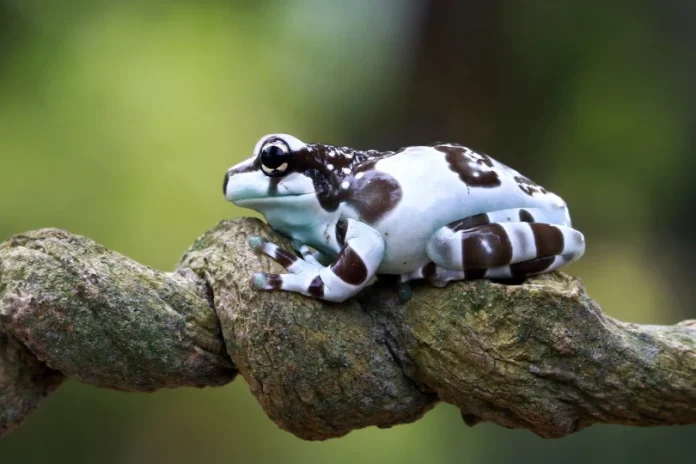Amazon milk frogs, also known as blue milk frogs, are a popular species of frog found in the rainforests of South America. These colorful and unique frogs are known for their bright blue and green coloration and their ability to secrete a milky white toxin when threatened. But one question that many people have about these frogs is, how big do they actually get?
In this article, we will explore the size of Amazon milk frogs and provide all the information you need to know about these fascinating creatures.
The Average Size of Amazon Milk Frogs
Placeholder for Amazon milk frog image
The average size of an adult Amazon milk frog is between 2.5 to 4 inches in length. This measurement includes their body and their long legs. However, there have been reports of some individuals reaching up to 5 inches in length.
The size of these frogs can vary depending on their gender, diet, and living conditions. Female Amazon milk frogs tend to be slightly larger than males, with some reaching up to 5 inches in length. This is because females need to be larger in order to carry and lay their eggs.
Growth and Development of Amazon Milk Frogs
Placeholder for tadpole image
Like most frogs, Amazon milk frogs go through a series of stages in their development. They start as eggs, hatch into tadpoles, and then eventually metamorphose into adult frogs.
When Amazon milk frog eggs hatch, the tadpoles are only about 0.5 inches in length. They will continue to grow and develop over the course of 8-12 weeks before they start to metamorphose into frogs.
During this time, the tadpoles will grow to be around 2 inches in length before they start to develop legs and lose their tails. Once they have fully metamorphosed into frogs, they will reach their adult size of 2.5 to 4 inches.
Factors That Affect the Size of Amazon Milk Frogs
Placeholder for rainforest image
There are several factors that can affect the size of Amazon milk frogs. These include:
- Gender: As mentioned earlier, female Amazon milk frogs tend to be slightly larger than males.
- Diet: A well-fed frog will grow larger than one that is not receiving enough food. In captivity, it is important to provide a varied and nutritious diet for your Amazon milk frog to ensure proper growth and development.
- Living conditions: Frogs that are kept in small enclosures or do not have enough space to move around may not reach their full size potential. It is important to provide a spacious and suitable habitat for your frog to thrive.
- Genetics: Just like humans, genetics can play a role in the size of an Amazon milk frog. Some individuals may naturally grow larger than others.
How to Care for Your Amazon Milk Frog
Placeholder for frog habitat image
In order for your Amazon milk frog to reach its full size potential, it is important to provide proper care and a suitable habitat. Here are some tips for caring for your frog:
- Housing: Amazon milk frogs require a spacious and humid environment. A terrarium with a minimum size of 20 gallons is recommended for one frog, with an additional 10 gallons for each additional frog. The enclosure should also have plenty of plants and hiding spots for the frog to feel secure.
- Temperature and humidity: These frogs thrive in warm and humid conditions, with a temperature range of 75-85°F and humidity levels of 70-80%. A heat lamp and a misting system can help maintain these conditions.
- Diet: Amazon milk frogs are insectivores, meaning they primarily eat insects. In captivity, they can be fed a variety of insects such as crickets, roaches, and mealworms. It is important to dust their food with calcium and vitamin supplements to ensure proper nutrition.
- Handling: While Amazon milk frogs can be handled, it is important to limit handling to avoid causing stress to the frog. When handling, make sure to wash your hands beforehand and handle the frog gently.
Fun Facts About Amazon Milk Frogs
Placeholder for frog jumping image
- Amazon milk frogs are known for their jumping abilities and can jump up to 3 feet in a single leap.
- These frogs are nocturnal, meaning they are most active at night.
- They are also known for their unique defense mechanism of secreting a milky white toxin when threatened.
- Amazon milk frogs are social creatures and can be kept in groups in captivity.
- They are not a threatened species and are commonly found in the wild.
Conclusion
In conclusion, the average size of an Amazon milk frog is between 2.5 to 4 inches in length, with females being slightly larger than males. Proper care and a suitable habitat are important for these frogs to reach their full size potential. With their unique coloration and jumping abilities, Amazon milk frogs make fascinating pets for frog enthusiasts.
For more information, visit ApzoMedia



































































